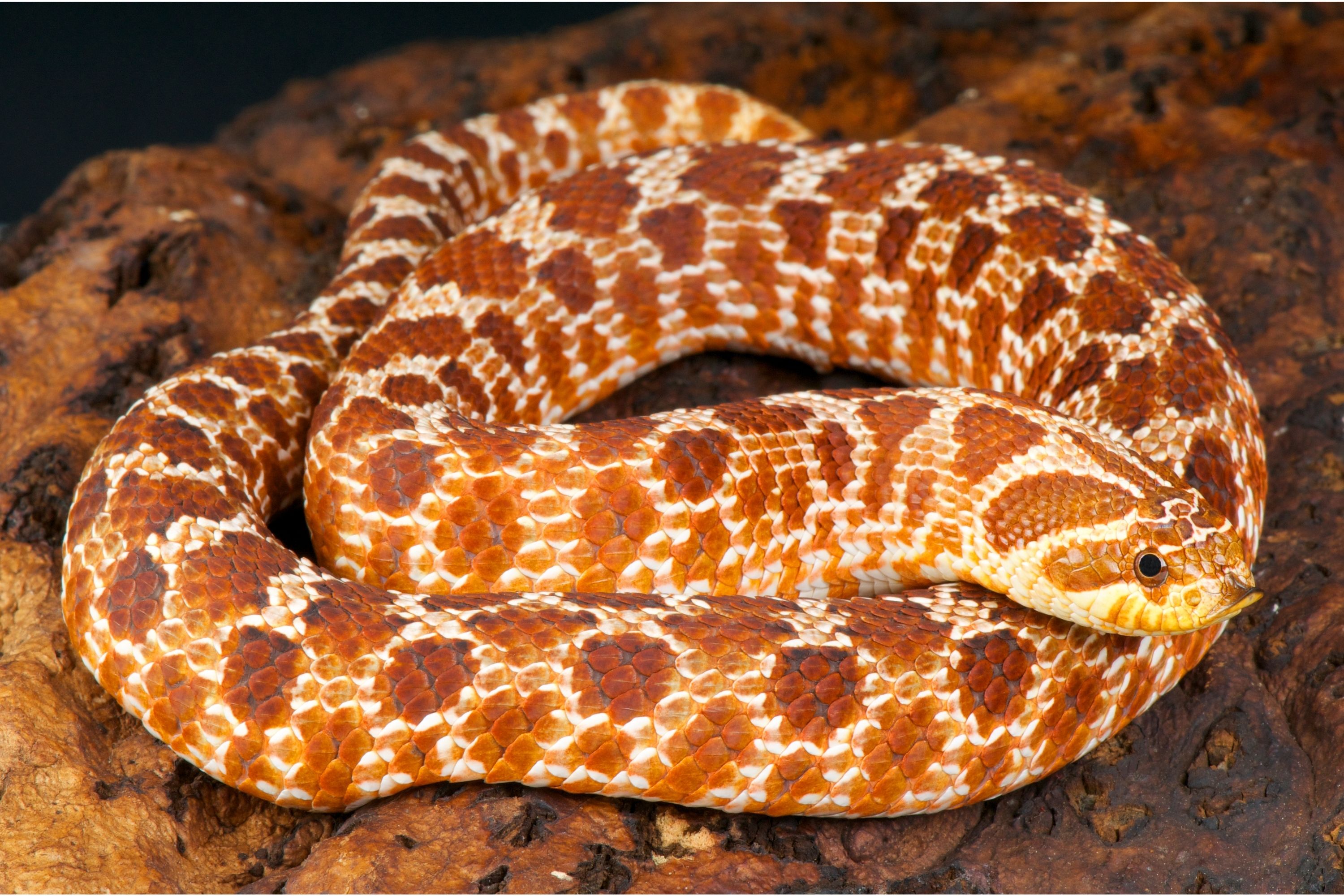Western hognose snake
(Heterodon nasicus)

Description
The western hognose snake (Heterodon nasicus) is a species of rear fanged venomous snake in the family Colubridae. The species is endemic to North America. The western hognose snake is a relatively small, stout-bodied snake. Its color and pattern is highly variable between subspecies, although most specimens appear much like rattlesnakes to the untrained eye, which appears to be Batesian mimicry. Males are considerably smaller than females, with adults rarely exceeding a total length (including tail) of 40–50 cm (15–20 inches). This snake gets its common name, "hognose", from the modified rostral (nose) scale that is formed in an upturned manner, providing a very "hog-like" look. Additionally, this adaptation makes these snakes adept burrowers. The species is not dangerous to humans, but there exists scientific debate regarding whether the mild toxins in the hognose's bite result from saliva, harmful to its preferred wild food source – toads – or an extremely mild venom produced in glands connecting to the hognose's minuscule rear fangs. In either case, no deaths or systemic effects from the extremely rare bite from this rear-fanged snake have been recorded. Although bites may uncommonly be medically significant, the species is not regarded as venomous. In captivity, the species has been bred into about 52 different "designer" color morphs. The western hognose snake occurs from southern Canada throughout the United States to northern Mexico. It frequents areas with sandy or gravelly soils, including prairies, river floodplains, scrub and grasslands, semi-deserts, and some semiagricultural areas. It has been found at elevations of up to 2,500 m (8,200 feet).
Taxonomic tree:







